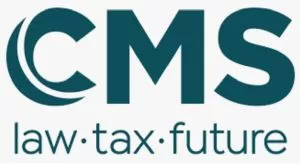- with Finance and Tax Executives
- in European Union
1. Background and scope
On 2 June 2022, Regulation (EU) 2022/858 of the European Parliament and of the Council on a pilot regime for market infrastructures based on distributed ledger technology ("DLT") was published in the Official Journal (the "Regulation"). The Regulation aims to provide entities which operate securities trading and settlement systems based on DLT ("DLT Market Infrastructures") with a set of rules suited to crypto-assets that qualify as financial instruments within the meaning of Directive 2014/65/EU ("MiFID II"). The Regulation further enables such entities to be exempted from a number of requirements that would normally be applicable to them under existing European Union ("EU") directives or regulations.
DLT Market Infrastructures covered by the Regulation include1:
- DLT multilateral trading facility("DLT MTF"): a multilateral trading facility that only admits to trading DLT financial instruments;
- DLT settlement system("DLT SS"): a settlement system that settles transactions in DLT financial instruments against payment or against delivery, allowing the initial recording of DLT financial instruments or the provision of safekeeping services in relation to DLT financial instruments; and
- DLT trading and settlement system("DLT TSS"): a DLT MTF or DLT SS that combines services performed by a DLT MTF and a DLT SS.
As a side note, crypto-assets which do not qualify as financial instruments within the meaning of MiFID II (e.g. stablecoins or e-money tokens) will be covered by the regulation for markets in crypto-assets (also known as "MiCAR"), which is still currently in discussions at EU level.
2. Key highlights
(a) Limitations
The Regulation shall only apply to certain DLT financial instruments,i.e.those which are non-complex (shares, debt securities, units in collective investment undertakings) and of a limited aggregated market value2.
(b) Specific permission
Authorised financial institutions (such as investment firms, central securities depositaries and market operators) may apply for a specific permission to operate as a DLT Market Infrastructure under the Regulation3. The status as DLT Market Infrastructure is, however, optional4.
Permission to operate will be valid throughout the European Union5. It will only be granted on a temporary basis, for a period of up to six years and valid only for the duration of the pilot regime.
(c) Exemptions
An operator of a DLT Market Infrastructure may request to be exempted from certain otherwise applicable regulatory requirements, provided that it meets all of the conditions set out under the Regulation. Indeed, certain requirements deriving from other applicable texts may not be adequate and could thus prevent such operators from developing solutions for the trading and settlement of transactions in crypto-assets that qualify as financial instruments6.
(d) Additional requirements
Operators of DLT Market Infrastructures will need to comply with a number of specific requirements laid down in the Regulation, and shall thusinter alia:
- establish clear and detailed business plans describing how they intend to carry out their services and activities;
- establish or document rules on the functioning of the DLT they use;
- provide their members, participants, issuers and clients with clear and unambiguous information on their website regarding how they carry out their functions, services and activities and how their performance of these deviates from those performed by a multilateral trading facility or securities settlement system that is not based on DLT;
- ensure that the overall IT and cyber arrangements related to the use of DLT are proportionate to the nature, scale and complexity of their business;
- prevent, if applicable, the use of members', participants', issuers' or clients' assets (funds, collateral or DLT financial instruments) for own account without the prior express consent of the relevant party;
- maintain safe, accurate, reliable and retrievable records of the assets; and
- establish and make publicly available a clear and detailed strategy for reducing the activity of, transitioning out of or ceasing to operate, a particular DLT market infrastructure in certain circumstances (so-called "transition strategy").
(e) Cooperation requirements
In order to enable competent authorities across the EU to gain experience from the impact of DLT and to understand whether amendments to the current financial legislation would be necessary, operators of DLT Market Infrastructures are required to submit regular reports to their competent authorities. Furthermore, the framework and its functioning shall be subject to frequent monitoring and evaluation.
3. Timing and next steps
Most of the DLT Pilot Regime Regulation provisions shall apply as from 23 March 2023.
Three years from the date of application of the Regulation, the European Securities and Markets Authority shall present a report to the Commission containing its assessment of the pilot regime. On this basis, the Commission shall present a report to the European Parliament and the Council, analysing whether such temporary regime should be extended (in time and/or to other types of financial assets), amended, made definitive or terminated. If the pilot regime is successful, it could be made permanent by amending EU financial services legislation to establish a single coherent framework7.
Footnotes
1. Recital 12 of the Regulation.
2. Article 3 of the Regulation.
3. Articles 8 to 10 of the Regulation.
4. Recital 7 of the Regulation.
5. Ibid 3.
6. Recital 6 of the Regulation.
7. Recital 53 and Article 14 of the Regulation.
The content of this article is intended to provide a general guide to the subject matter. Specialist advice should be sought about your specific circumstances.






